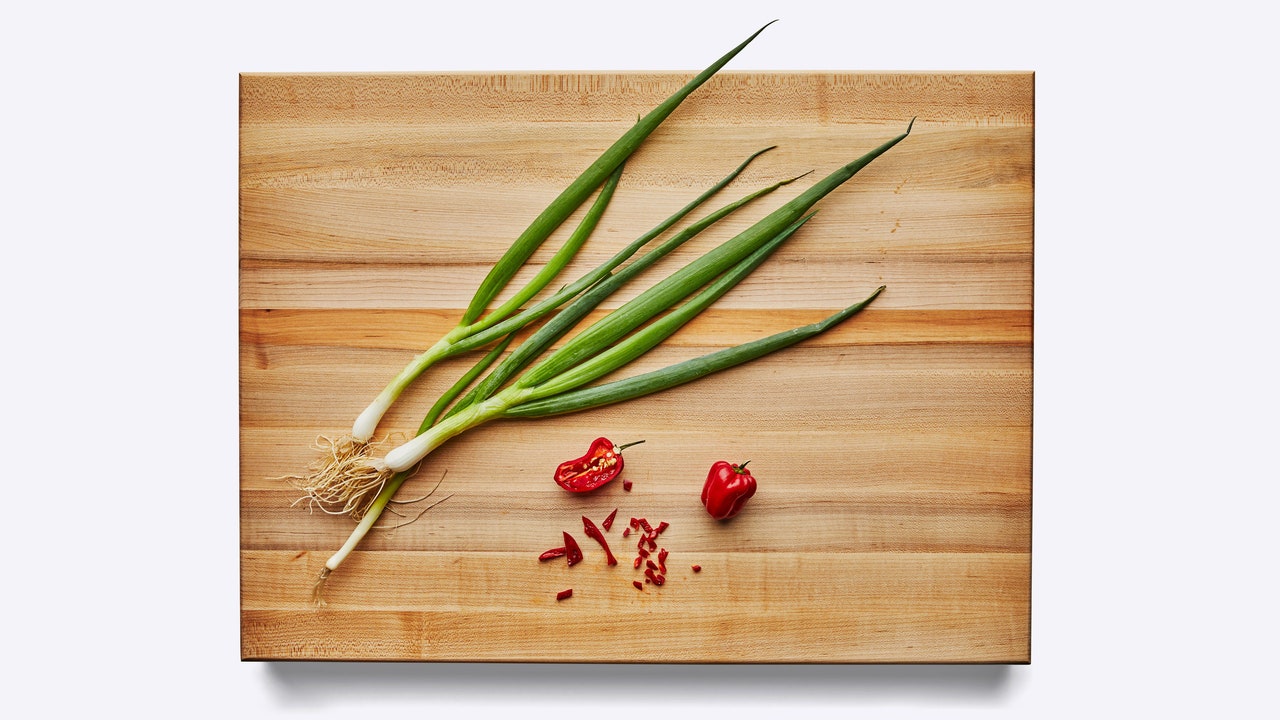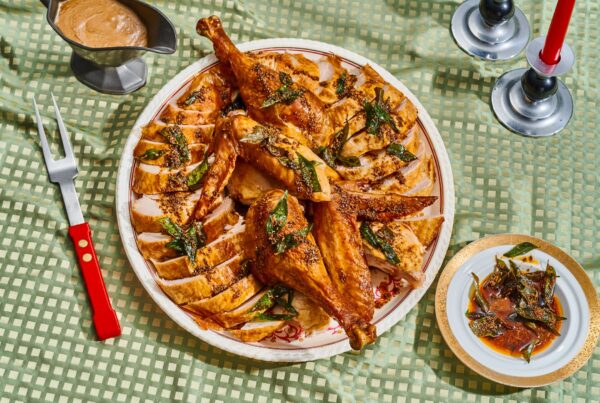Cons: These boards require the most maintenance, because wood is the most absorbent board material out there. They can be prone to retaining odors and stains, which means cleaning and caring for them is extra important—and requires more work than plastic or rubber. Scroll to the end for more on that.
Who it’s best for: Wood boards are best for those who are game to give their kitchenware the care and attention it deserves—you know, the people who are regularly sharpening their knives and deep-cleaning their Dutch ovens.
Rubber cutting boards
Pros: Rubber cutting boards are a favorite within restaurant kitchens and for pros like Guido for a reason. They’re super durable and even softer than wood cutting boards, which means they’re even easier on your knives. While they aren’t usually dishwasher-safe, they don’t need any mineral oil applied (unlike wood cutting boards, which do); just wash them with mild detergent and leave them to air-dry.
Cons: The only real cons here are that rubber cutting boards don’t have the luxe look and feel you get from a wood board. They also tend to be heavier and pricier than plastic ones.
Who it’s best for: Rubber cutting boards are great for people who want to invest in a piece of equipment that will last them for years to come, but doesn’t require a whole lot of upkeep.
Plastic cutting boards
Pros: The main selling points of plastic cutting boards are that they’re lightweight, sanitizing them is easy—most are dishwasher-safe, though very hot temps could result in warping—and they’re cheaper than most wood and rubber boards. Plastic is also a less absorbent material than wood (and about the same as rubber), according to Morocco, which means they won’t harbor bacteria so easily.
Cons: You do run the risk of your cutting surface moving around a bit when it comes to plastic boards, unless you go with one that’s designed to stay put like our top pick here. Morocco recommends laying a damp dish towel, paper towel, or nonslip rubber mat under your plastic board to keep it steady. They’re also probably not the move if you’re looking for a super long-lasting purchase. Plastic boards tend to warp more easily than rubber, can get irreparably scuffed, and “develop deep grooves [with frequent use] that make them less sanitary over time,” Morocco says.
Who it’s best for: If you’re the kind of home cook who is a dishwasher devotee, isn’t quite ready to invest in a more durable board, or wants to cut up raw chicken one day and mince garlic the next, then plastic boards are the pick for you.
Glass cutting boards
It’s a trick! If you’ve got a glass cutting board laying around for some reason, know that it’s brittle and breakable, and it may even dull, chip, or break your chef’s knife. You also may find yourself vacuuming shards of glass off the kitchen floor should you try to use it. Morocco could think of only one reasonable use case for glass boards: “They make a perfect gift for your enemies.”
How Many Cutting Boards Do You Need?
We recommend going the economical route with plenty of cookware, kitchen tools, and gadgets, but cutting boards are definitely an area where you should consider investing in a more expensive model. If you’re serious about cooking and have the space, we’d suggest you actually buy multiple cutting and carving boards. Buy a specific (color-coded) rubber or plastic board and designate it for tasks like breaking down chicken or filleting fish, which will help you avoid cross contamination. For vegetable prep, when your knife is interacting with the board more, opt for “wood or rubber, which will be so much gentler on your blade and feel more pleasant” to work with than plastic, Morocco says.
How to Wash Your Cutting Boards
As we mentioned, plastic cutting boards are the lowest maintenance option as you can simply pop them in the dishwasher. Though, if you’re cutting meat or fish, you need to scrape off any remnants under cold water before throwing it in. In restaurant kitchens, people often have a metal scraper that looks a bit like a palette knife for this; your pastry scraper can also work. It prevents the proteins from cooking into the board’s nooks and crannies in hot water.
Source link










